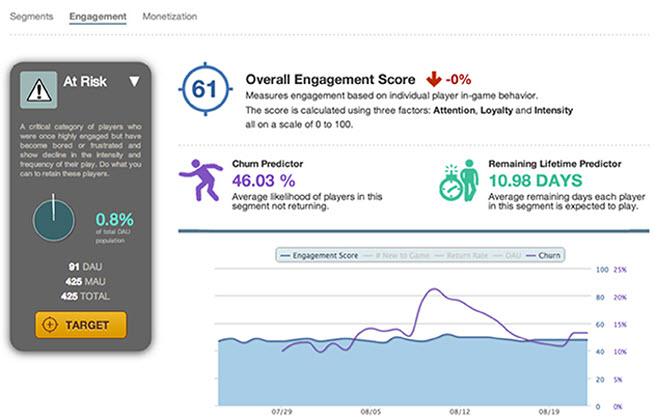Playnomics claims it knows which players are likely to quit a game in the next 30 days and what a game developer can do to stop that from happening.
Playnomics says it’s advancing the science of running a profitable free-to-play mobile or social game. And it is moving the ball today with its Churn Predictor program on its PlayRM analytics platform. Just as data science has become useful in many other markets, it is becoming critical in games, and Playnomics’ goal is to give every game developer key insights into data and what they mean for the long term in regard to player behavior, audience targeting, promotions, and a game’s life cycle.
Chethan Ramachandran, the chief executive of Playnomics, said in an interview that 70 percent of players in free-to-play titles, where people can play for free and pay real money for virtual goods, will quit within the first 30 days. Playnomics can now predict how anonymized players will behave, who is likely to spend money, who should developers should target with promotions, and who the developer has to pay attention to in order to prevent the dreaded churn, or decision to stop playing a game.
The San Francisco company can do this because it sifts through data from its customers on more than 200 million player profiles in many of the leading online and mobile games. Playnomics is processing billions of in-game events per month. Founded in 2009, Playnomics (formerly Turiya) won our 2010 Who’s Got Game startup competition at our GamesBeat conference. (See here for this year’s contest). It has 30 employees and has raised $8.2 million to date from FirstMark Capital, Vanedge Capital, XSeed Capital, MetamorphicVentures, Accelerator Ventures, and TriplePoint Capital.
Over the years, Playnomics has rolled out more services that take advantage of the analytics that it collects on games for a platform it calls PlayRM. The Churn Predictor is the latest of several features that helps predict the lifetime value of a player in various game segments. Lifetime value is an important metric for game developers to figure out. If they collect a certain amount of money from a player over that user’s lifetime, the company has a much better handle on how much it should spend on marketing and advertising to acquire that user.
Some big companies can come by this type of information more easily by sifting through millions of users. But Playnomics hopes to help indie developers and mid-sized firms who can’t otherwise get access to huge amounts of user data. After studying its data, Playnomics is confident that it can figure out how long a person will play a certain game and what can be done to keep the user happy. Playnomics also shows the developer what kind of promotional campaign to create for that user. On the analytics dashboard, a Playnomics client can see how many days remain until a player will quit.
“This is a logical extension and something we have strived for all these years,” Ramachandran said. “It’s more important to predict when someone will leave in a free-to-play game, because your goal as a game developer is to keep the audience playing as long as possible. You see each player who is likely to leave the game. It’s powerful because it lets you focus on the campaign to run to stop that from happening.”
VentureBeat's mission is to be a digital town square for technical decision-makers to gain knowledge about transformative enterprise technology and transact. Learn More


